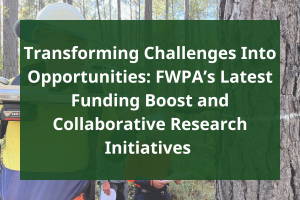A recently completed analysis of Australia’s national forest industry biosecurity programs has revealed exotic pests are a real and rising risk to Australian plantations and native forests – and that the right investments in prevention and mitigation pay off.
The comprehensive study included an analysis of the cost benefit of two current pest management examples – chysomelid leaf beetles and sirex woodwasp – and modelled a potential scenario for an incursion by the pinewood nematode. In all three studies, it was found that significant investment in research on control early in the program is critical to a timely and cost-effective outcome.
Co-funded by Forest and Wood Products Australia and the University of the Sunshine Coast, the researchers concluded current forest biosecurity surveillance beyond border control was insufficient, inconsistent and reliant on a cohort of experts nearing retirement. It was recognised that Australia has a world-class biosecurity system, but that it currently has a greater focus on agricultural and horticultural industries.
It is anticipated that many of these issues will be addressed in the National Forest Biosecurity Surveillance Strategy (NFBSS) and Implementation Plan currently under development.
Key project researcher, Dr Angus Carnegie, said it was crucial to be vigilant to the arrival of pests and to act quickly in a whole-of-industry way when addressing pest incursions.
For example, by the time pinewood nematode was detected in Portugal, over 500,000 hectares were affected by pine wilt disease and a €38 million (AUD $57 million) eradication program failed. By contrast, three isolated outbreaks in Spain were detected early and eradicated for less than €5 million (AUD $7.5 million).
The researchers modelled a scenario in which the pinewood nematode – which is carried by Japanese pine sawyer beetles – arrived at the Port of Brisbane in wood packaging, before being transported to a holding facility in Caboolture and spreading to commercial softwood plantations five kilometres away at Beerburrum.
A cost-benefit analysis found it would be worth spending $350,000 a year in biosecurity activities (e.g. surveillance, trapping) to prevent pine wilt disease from becoming established at Beerburrum.
“Biosecurity surveillance is insurance. You hope your house isn’t going to get robbed or burnt down but it’s well worth spending a couple of thousand dollars a year on premiums just in case,” said Dr Carnegie, who is Principal Research Scientist at the NSW Department of Primary Industries.
“It is particularly worthwhile conducting systematic surveillance in trees near ports, where exotic pests may first become established.”
The report also details the history of biosecurity in Australia; Commonwealth and State Agency linkages and responsibilities; and the establishment of commercial state plantation resources. It found:
- There has been a steady increase in pests detected at the Australian border since 2000 with the growth in trade via shipping – and those detections are the tip of the iceberg as most containers are not inspected.
- Recent examples of pests which have made it past the border and affected Australian trees include myrtle rust and giant pine scale.
- There was a need for better staff and industry training to increase the potential to detect emerging threats, with no currently nationally recognised course on biosecurity.
- Within five years, a substantial number of experienced technical experts in Australia will have retired.
- Sixty-nine per cent of forest growers surveyed conducted pest population monitoring, but only 56 per cent had staff awareness programs for forest health and biosecurity.
The research used data from both industry and government, and was conducted collaboratively by the University of the Sunshine Coast, NSW Department of Industry (Forest Science) and Forestry Tasmania.
The study was peer-reviewed by Dr Andrew Liebhold of the US Department of Agriculture Forest Service, who described it as a “very impressive” report that should provide “excellent guidance in planning national efforts on forest biosecurity in the future”.
Dr Liebhold stated this was the most detailed assessment of its kind that he has seen to date and felt that it served as an exemplar report that should be reviewed and replicated in other major forest grower regions and nations.
The full report is available on the FWPA website and a series of supporting webinars are in production.



